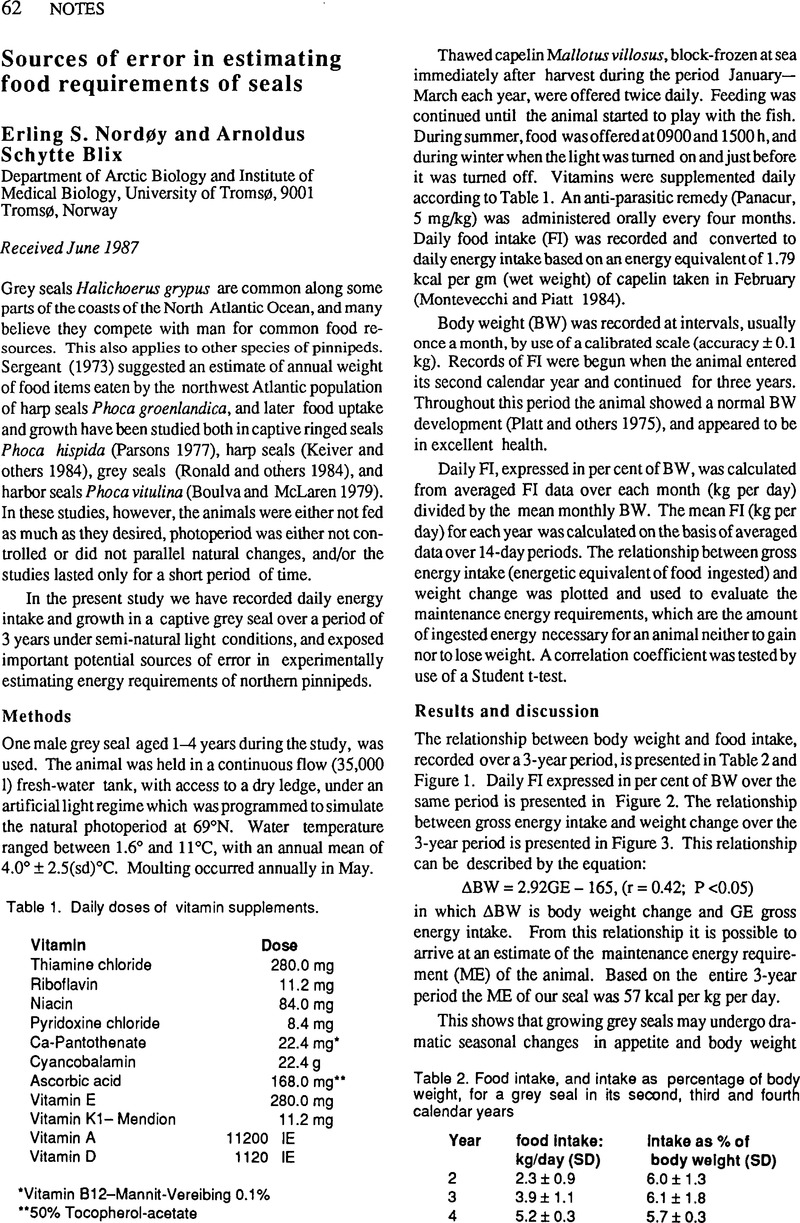Crossref Citations
This article has been cited by the following publications. This list is generated based on data provided by Crossref.
Ryg, Morten
and
Are Øritsland, Nils
1991.
Estimates of energy expenditure and energy consumption of ringed seals (Phoca hispida) throughout the year.
Polar Research,
Vol. 10,
Issue. 2,
p.
595.
RYG, MORTEN
and
ØRITSLAND, NILS ARE
1991.
Estimates of energy expenditure and energy consumption of ringed seals (Phoca hispida) throughout the year.
Polar Research,
Vol. 10,
Issue. 2,
p.
595.
Renouf, D.
Gales, Rosemary
and
Noseworthy, Elizabeth
1993.
Seasonal variation in energy intake and condition of harp seals: Is there a harp seal morph? Problems for bioenergetic modelling.
Journal of Zoology,
Vol. 230,
Issue. 3,
p.
513.
Lager, A. R.
Nordøy, E. S.
and
Blix, A. S.
1994.
SEASONAL CHANGES IN FOOD INTAKE OF HARP SEALS (PHOCA GROENLANDICA) AT 69°N.
Marine Mammal Science,
Vol. 10,
Issue. 3,
p.
332.
Nordøy, E.S.
Mrtensson, P-.E.
Lager, A.R.
Folkow, L.P.
and
Blix, A.S.
1995.
Whales, seals, fish and man, Proceedings of the International Symposium on the Biology of Marine Mammals in the North East Atlantic , 29 November-1 December 1994.
Vol. 4,
Issue. ,
p.
255.
Trites, A. W.
and
Bigg, M. A.
1996.
Physical growth of northern fur seals (Callorhinus ursinus): seasonal fluctuations and migratory influences.
Journal of Zoology,
Vol. 238,
Issue. 3,
p.
459.
Winship, Arliss J.
Trites, Andrew W.
and
Calkins, Donald G.
2001.
GROWTH IN BODY SIZE OF THE STELLER SEA LION (EUMETOPIAS JUBATUS).
Journal of Mammalogy,
Vol. 82,
Issue. 2,
p.
500.



